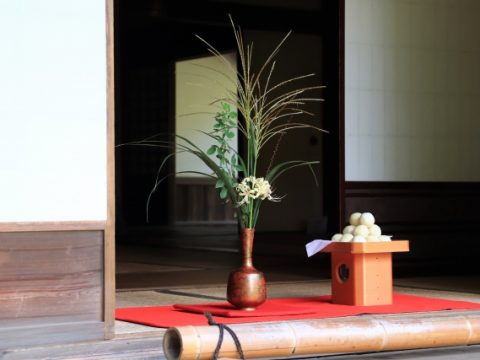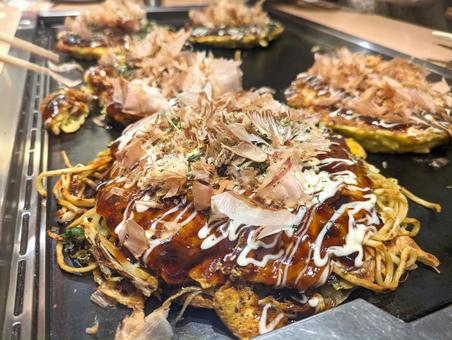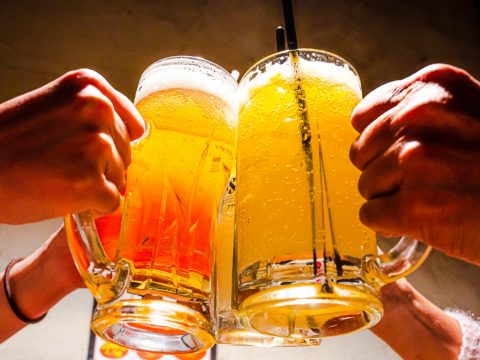Natto (納豆)
JAPANESE FOODS
03.09.2022

Fermentation has always been used to preserve foods in many different cultures. Most of which produce a unique smell. Some are popular and loved by many people worldwide, like cheese. Some are too unique and unbearable to the others, like surströmming (canned, fermented Baltic Sea herring originated in Sweden).
Natto is one of the foods that many foreigners don’t even want to try because of its smell and textures. Even some native Japanese don’t like to eat them (I am a huge fan!).

What is Natto?
Natto is cooked soybeans fermented with bacillus subtilis; the bacteria commonly found in hay and grass, in this case, rice straw.
The origin of Natto is unclear, but there are a few theories. The oldest theory is dated back to the Yayoi era (around 300 B.C. – 250 A.D.) when people started to grow rice and used rice straw as flooring for the house. Someone accidentally dropped cooked soybeans on the floor and discovered the fermented beans later.

Another theory involves a famous Japanese warrior, Minamoto no Yoshiie. In 1051 A.D., his father and Yoshiie joined the war known as the Zenkunen war. Back then, people used to feed cooked soybeans to war horses. So when Yoshiie was called to assist in the battle, he was in a rush. He packed cooked soybeans in the rice straw container without cooling it down. Then, he fastened the container onto his horse saddle and left for the battle. Because the beans were still hot and the body heat from the horse kept them warm, the bacteria on the rice straw grew and fermented the beans.
Whatever the theory is, it always ends with the accidental combinations of cooked soybeans and bacillus subtilis on rice straw. Even though I like eating Natto, I am still in awe that someone decided to eat the stinky, slimy, and stringy beans when it was first discovered.
Where Can I get Natto?
You can get Natto at any grocery and convenience stores if you live in Japan. If you are outside of the country, try a Japanese food store. Since Natto freezes very well, they tend to be in the freezer section. Most of them are packaged in a small Styrofoam container for one serving and a pack of three. Some come with soy sauce-based sauce and Japanese mustard as seasonings.

How to eat Natto?
When you open the package, you will see a plastic sheet. Remove it carefully so the strings won’t fly everywhere. Stir them with chopsticks by making a circle until it becomes very sticky and the beans are covered with white foam. Add some seasonings, then mix again. You can eat it by itself or put it on top of a bowl of hot rice. If you like Natto, you can explore different ways of eating Natto. You will be surprised how many recipes you can find!

Can I make Natto at home?
In the modern world, you can purchase a Natto starter in a packet, or if you have Natto in your fridge or freezer, you can use it to make more Natto. There are many internet sources, either in Japanese or in English, to make Natto at home. It is surprisingly very easy and straight forward.

Eri Palmer
Eri grew up in Japan. She came to U.S. as an international student, and decided to stay in the country. Cooking is one of her passions, and she loves to cook Japanese food for her children.
Read previous articles by the writer
Read latest articles
KEYWORDS
- # PICKPICK
- # Resume
- # alcohol
- # Rice
- # Soup
- # winter food
- # Fast Food
- # seafood
- # spicy foods
- # raw food
- # fermented food
- # Transportation
- # MEAT
- # Edo culture
- # suits
- # clothing
- # drink
- # fish
- # seasoning
- # Japanese New Years Foods
- # Toshikoshi soba
- # Osechi Ryori
- # Ozoni
- # Christmas
- # Japanese fusion pasta
- # Wafu Pasta
- # Japanese Hot Pot
- # なべ
- # 鍋
- # Miyazaki
- # Chicken Nanban
- # Karamen
- # Autumn Wagashi
- # Mushi-yokan
- # Imo-yokan
- # Japanese Autumn Fruits
- # Autumn
- # Vending Machine
- # fall
- # dango
- # Chestnut rice
- # saury
- # Mushroom
- # Rice vinegar
- # Japanese condiments
- # 調味料
- # Sake
- # Mirin
- # Soy sauce
- # Japanese Noodles
- # Udon
- # Ramen
- # Yakisoba
- # Soba
- # Japanese Seaweed
- # 海藻
- # かいそう
- # Payslip
- # Training
- # Japanese summer foods
- # 和菓子
- # Wagashi
- # ryokucha
- # 夏
- # 飲み物
- # Ramune
- # ラムネ
- # Pokari Sweat
- # ポカリスエット
- # Calpis
- # カルピス
- # Mugicha
- # ume
- # 梅
- # うめ
- # umeshu
- # job hunting
- # tofu
- # Recruitment in Japan
- # miso
- # Japanese cuisine
- # Yellowtail and bonito
- # Children’s Day
- # Kashiwa Mochi
- # Chimaki
- # fruits
- # Kusamochi
- # Types of Agriculture in Japan
- # bread
- # パン
- # パン屋さん
- # japanese bread
- # shokupan
- # meal blead
- # anko bread
- # 桜
- # さくら
- # cherry blossom
- # visa
- # hanami
- # omotenashi
- # sakura
- # おもてなし
- # Japanese hospitality
- # oshibori
- # wet hand towel
- # hand towel
- # restaurant
- # Commuting in Japan
- # Women-only cars
- # Exit gate
- # japanese train
- # train
- # valentine
- # Japanese sweets
- # 朝食
- # Japanese Breakfast
- # Breakfast
- # Japanese
- # 日本
- # healthy
- # persimmons
- # hoshigaki
- # HR
- # work in Japan
- # jinji ido
- # corporate systems
- # Japanese work culture
- # bento
- # ekiben
- # shinkansen
- # omiyage
- # train station
- # Japanese culture
- # work culture
- # mentaiko
- # umeboshi
- # Japanese snacks
- # potato chips
- # Japanese potato chips
- # Japanese writing
- # seaweed
- # konbu
- # ocean foods
- # shio konbu
- # dashi
- # miso soup
- # food processing
- # pear
- # nashi
- # sweet potato
- # japanese sweet potato
- # stingray
- # satsuma imo
- # food value chain
- # homecooking
- # agriculture
- # Japanese homecooking
- # farming
- # nikujaga
- # shojin ryori
- # meat and potatoes
- # traditional foods
- # comfort food
- # buddhist food
- # manufacturing
- # factory
- # eihire
- # vegetarian
- # food and beverage
- # izakaya
- # yatai
- # japanese festival
- # taiyaki
- # matsuri
- # summer
- # Ikayaki
- # smart agriculture
- # shaved ice
- # kakigori
- # かき氷
- # summer dessert
- # Japan
- # Japanese foods
- # dessert
- # fruit
- # matcha
- # icecream
- # Pikcup
- # Pikc up
- # Pcikup
- # skilled labor visa
- # working visa japan
- # Dineer Table in Japan
- # Japanese manner
- # Japanese food
- # Japanese Table Manner
- # Chopsticks
- # Japanese traffic signs
- # traffic information
- # road rules in Japan
- # chocolate
- # green tea
- # Osaka
- # Work Japan
- # Japanese company
- # ikura
- # sushi
- # nigiri
- # wasabi
- # PCIK
- # PICK UP
- # PICK
- # PICKUP








